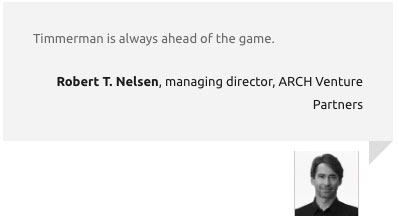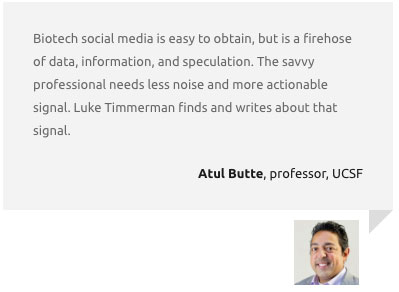The Success of Your Tech Deployment Depends On A Role You’ve Probably Never Heard Of

David Shaywitz
The success or failure of many technology platforms — including in particular health tech platforms — rests with a largely obscure role of outsized importance: the “solutions engineer.”
The role itself goes by many names. Back when I was at DNAnexus in the mid-2010s, this role was called “Solutions Scientist.” Others call it “Forward-Deployed Engineer” or “Embedded Analyst.”
Whatever the title, the solutions engineer (SE) is a technology or data expert who embeds within an organization that’s trying to figure out how to make a new technology platform work. The SE functions as an on-site super tech-support specialist who helps the customer use the technology and get as much value from it as possible. While the SE doesn’t need to reside in the customer’s organization, the SE must inhabit the customer’s challenges and workflow — and having a desk (real or virtual) within the customer’s team can help.

Richard Daly, CEO, DNAnexus
“In a high velocity health information technology environment such as we are in,” says DNAnexus CEO Richard Daly, the SE is the “key person” for both selling and service, because “they get inside the customer’s skin, co-own the problem, and fit the solution to the customer need.”
At the same time – and arguably, this is the most critical aspect – the SE also develops a richly nuanced understanding of the needs of the customer and is able to provide this intelligence back to the product manager and the rest of the engineering team, so that the platform can be evolved to more effectively meet the needs (and future needs) of the customer, and presumably other future customers.
In serving as a “key transmission point” for both customer and tech company, Daly notes, the SE “improves product development and fit-to-market.”
Moreover, Daly adds, since “customers in the health tech market are scaling,” which introduces its own set of challenges, a well-functioning team of SE’s can “draw on industry and other customer experiences, in a way syndicating industry-wide knowledge, and ensuring continuing fit as the customer evolves.”
SEs come in different flavors, says Dr. Amy Abernethy, President of Product Development and Chief Medical Officer of Verily.
“The type of SE depends on the type of tech itself. Sometimes the tech is purely software, in which case you need someone fluent in the intersection of software development and customer needs. Sometimes the tech developer is supporting mostly data products, in which case the SE looks more like an embedded analyst who has data empathy, an understanding of customer analytic needs, and a sense of the possible from a data perspective. In pharma, the tech product is becoming increasingly more a combo of software and data, and the SE needs to be able to blend both of these skills.”
Your Initial Solution May Not Be Your Customer’s Exact Problem
A lot of the thinking here comes back to the advice offered by Lean Startup author and entrepreneurship guru Steve Blank, who emphasized the need for the technology developers to spend as much time as possible with actual customers, to ensure that the needs the developers have prioritized are actually the same needs customers face.
In this context, SE roles provide the opportunity for essential fine tuning; after all, if a tech platform wasn’t in the ballpark, the SE would never have been given the opportunity to engage with a customer in the first place, and certainly wouldn’t be in the privileged position to go work on a customer’s team.
The most successful SE’s exhibit an authentic interest in the customer’s business – they are innately, intensely curious about the work the customer is doing, and the problems the customer is trying to solve. A high EQ SE can become an enormously valuable member of the customer’s team, a critical resource that enables them to function better and achieve more.
At the same time, it is absolutely critical that the SE is not regarded as simply as an implementation specialist, someone who gets a team up and running on a new system. Rather, the most significant opportunity the SE affords is to provide an inquisitive and adaptable technology team with a sense of what is and isn’t working well, and how the technology could more effectively meet customer needs. If the technology team isn’t thirsty for and responsive to this feedback, a valuable opportunity is lost.
Significant Challenge And Opportunity for Biopharmas
The need for SEs applies not only to technology companies who are developing platforms, but also, in biopharmas, to internal technology teams as well. Indeed, because of the abiding, largely unbridged differences between the seemingly immiscible cultures of life-science trained drug developers, and engineering-oriented technologists, effective communication and shared understanding can be a challenge, as I’ve discussed here and here.

Amy Abernethy, president of product development and chief medical officer, Verily
In this context, Dr. Abernethy points out, SE’s can “help with ‘lingua franca,’ translating terms between customers and developers.”
Adds Dr. Abernethy, “This task is also becoming more important within the tech and pharma companies themselves as we see a confluence of actions/capabilities across teams within the companies. Building lingua franca will be a key accelerant across the industry and the SE can help.”
In large biopharmas, it’s common for technology teams, after a highly-structured, well-intentioned needs-gathering exercise, to put their heads down and set up developing and deploying a technology solution.
Afterwards, there’s often little rejoicing. Tech teams tend to grumble about how their brilliant technology is not being efficiently utilized, inevitably calling for more “change management,” while customers routinely complain that their most important needs are (still) not being met. It’s not uncommon to hear technology teams push for mandates that compel customers to use the new technology – an effort that’s received about as well as you might expect. What’s worse, this pattern seems to repeat all the time – it feels like the rule, not the exception.
In many cases, a critical missing link is an SE role – a person with “amphipathic” qualities embedded inside the customer teams to help apply and troubleshoot the technology, and (critically!) to provide ongoing granular feedback to the tech teams about how the tech could evolve to meet customer needs more effectively.
Success critically requires both curiosity and a commitment to continuous iteration on the part of tech teams. These teams must want to deeply understand customer challenges, and ideally begin to viscerally understand what the customers are trying to do, the problems the customers are trying to solve. At least as importantly, the tech teams must also see the relationship with their customers as a constant, on-going dialog. This can be particularly challenging in biopharma when technology teams are often more accustomed to obtaining and then building towards a set of fixed specifications.
There’s another complicating factor: many customers — especially within biopharmas — may not be all that clear on what they initially want from technology, or understand what might (or might not) be possible. This understanding can evolve and sharpen over time, particularly when catalyzed by a skilled SE, and enabled by a tech organization that’s driven to constantly refine the product on offer.
An Evolving Role
As technology plays a more central role in healthcare and biopharma, the role of the SE is likely to evolve accordingly. As Dr. Abernethy observes, “The technologies that are being developed are more and more informed by our understanding of underlying biology and/or data/implementation elements from clinical care. I wouldn’t be surprised if the phenotype of the solutions engineer of the future has a bit more science or clinical knowledge built in, and the job descriptions will similarly become more sophisticated.”
Perhaps reflecting her previous experience as Deputy Commissioner of the FDA, Dr. Abernethy adds:
“The SE may also need to generally understand the implications and requirements of many different regulatory paradigms. We see this right now, because sometimes the SE looks like a person who understands computational biology and software engineering, sometimes looks like a person who understands clinical and EHR data coupled with the needs of outcomes researchers delivering a dataset for a regulatory filing, and sometimes looks like a person who understands when a product crosses over the line to being regulated clinical decision support.”
Phrased differently, the SE role reflects and embodies the need for constant dialog and evolutionary refinement between those developing digital, data, and technology offerings, and those who hope to leverage these powerful but still unformed or unfinished capabilities.
Bottom Line
A key gap in technology deployment, particularly in biopharmas, is the space between what technology teams develop and what customers actually want and need. A skilled solution engineer (SE) can bridge this gap and serve as a bidirectional translator, helping customers more effectively utilize the technology, and guiding technology teams to create improved solutions. Success requires not only a skilled SE, but also a curious and adaptable technology team driven to elicit, understand, and respond to customer needs – even (especially) when these needs are difficult for the customer to articulate.





